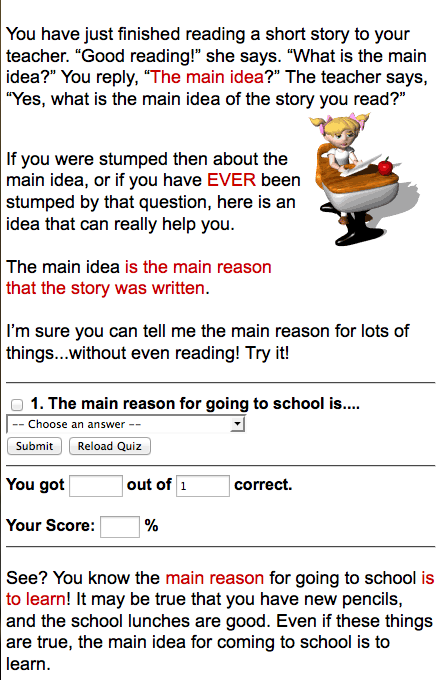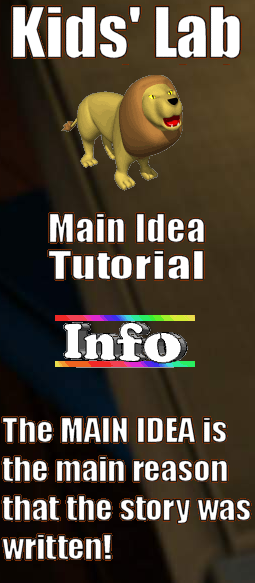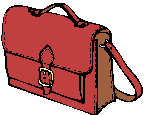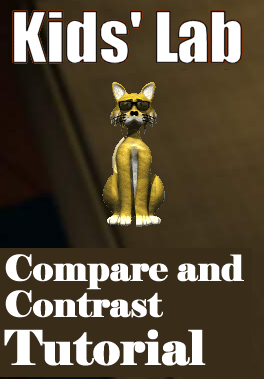|
|
| Grade K | Grade 1 | Grade 2 | Grade 3 | Grade 4 | Grade 5 | |||||||||||||||||||||||||||||||||||||||||||||||||||||||||||||||||||||||||||||||||||||||||||||||||||||||||||||||||||
|
Common Core 1 |
CST Bridge
|
Common Core |
CST Bridge
|
Common Core |
CST Bridge
|
Common Core |
CST Bridge
|
Common Core |
CST Bridge
|
Common Core |
CST Bridge
|
|||||||||||||||||||||||||||||||||||||||||||||||||||||||||||||||||||||||||||||||||||||||||||||||||||||||||||||
| 1. With prompting and support, ask and answer questions about key details in a text. | 1. Ask and answer questions about key details in a text. | 1. Ask and answer such questions as who, what, where, when, why, and how to demonstrate understanding of key details in a text. |
2.42 Ask clarifying questions about essential textual elements of exposition (e.g., why, what if,
|
1. Ask and answer questions to demonstrate understanding of a text, referring explicitly to the text as the basis for the answers. |
2.2 2 Ask questions and support answers by connecting prior knowledge with literal information found in, and inferred from the text.
2.3.2 Demonstrate comprehension by identifying answers in the text.
|
1. Refer to details and examples in a text when explaining what the text says explicitly and when drawing inferences from the text. |
1. Quote accurately from a text when explaining what the text says explicitly and when drawing inferences from the text. |
2.4 1 Draw inferences, conclusions, or generalizations about text and support them with
2.5 2 Distinguish facts, supported inferences, and opinions in text.
|
||||||||||||||||||||||||||||||||||||||||||||||||||||||||||||||||||||||||||||||||||||||||||||||||||||||||||||||||
|
Common Core 2 |
CST Bridge
|
Common Core |
CST Bridge
|
Common Core |
CST Bridge
|
Common Core |
CST Bridge
|
Common Core |
CST Bridge
|
Common Core |
CST Bridge
|
|||||||||||||||||||||||||||||||||||||||||||||||||||||||||||||||||||||||||||||||||||||||||||||||||||||||||||||
|
2. With prompting and support, retell familiar stories including key details. |
2. Retell stories, including key details, and
demonstrate understanding of their central
message or lesson.
|
2.7 Retell the central ideas of simple expository or narrative passages
|
2. Recount stories, including fables and folktales from diverse cultures, and determine their central message, lesson, or moral.
|
2. Recount stories, including fables, folktales, and myths from diverse cultures; determine the central message, lesson, or moral and explain how it is conveyed through key details in the text. |
2.5.2 Distinguish the main idea and supporting detail in expository text.
|
2. Determine a theme of a story, drama, or poem from details in the text; summarize the text. |
2. Determine a theme of a story, drama, or poem from details in the text, including how characters in a story or drama respond to challenges or how the speaker in a poem reflects upon a topic; summarize the text. |
2.3 3 Discern main ideas and concepts presented in texts, identifying and assessing evidence
|
||||||||||||||||||||||||||||||||||||||||||||||||||||||||||||||||||||||||||||||||||||||||||||||||||||||||||||||||
|
Common Core 3 |
CST Bridge
|
Common Core |
CST Bridge
|
Common Core |
CST Bridge
|
Common Core |
CST Bridge
|
Common Core |
CST Bridge
|
Common Core |
CST Bridge
|
|||||||||||||||||||||||||||||||||||||||||||||||||||||||||||||||||||||||||||||||||||||||||||||||||||||||||||||
|
3. With prompting and support, identify characters, settings, and major events in a story. |
3. Describe characters, settings, and major events in a story, using key details. |
3. Describe how characters in a story respond to major events and challenges. |
2.6 3 Recognize cause-and-effect relationships in a text.
|
3. Describe characters in a story (e.g., their traits, motivations, or feelings) and explain how their actions contribute to the sequence of events. |
3. Describe in depth a character, setting, or event in a story or drama, drawing on specific details in the text (e.g., a character’s thoughts, words, or actions). |
3. Compare and contrast two or more characters, settings, or events in a story or drama, drawing on specific details in the text (e.g., how characters interact). |
||||||||||||||||||||||||||||||||||||||||||||||||||||||||||||||||||||||||||||||||||||||||||||||||||||||||||||||||||
|
Common Core 4 |
CST Bridge
|
Common Core |
CST Bridge
|
Common Core |
CST Bridge
|
Common Core |
CST Bridge
|
Common Core |
CST Bridge
|
Common Core |
CST Bridge
|
|||||||||||||||||||||||||||||||||||||||||||||||||||||||||||||||||||||||||||||||||||||||||||||||||||||||||||||
|
4. Ask and answer questions about unknown words in a text. (See grade K Language standards 4–6 for additional expectations.) CA |
4. Identify words and phrases in stories or poems that suggest feelings or appeal to the senses. (See grade 1 Language standards 4–6 for additional expectations.) CA |
4. Describe how words and phrases (e.g., regular beats, alliteration, rhymes, repeated lines) supply rhythm and meaning in a story, poem, or song. (See grade 2 Lan- guage standards 4–6 for additional expectations.) CA |
1.5 2 Demonstrate knowledge of levels of specificity among grade-appropriate words and explain the importance of these relations (e.g., dog/mamma l/animal/living things).
|
4. Determine the meaning of words and phrases
as they are used in a text, distinguishing
literal from nonliteral language. (See grade |
|
4. Determine the meaning of words and phrases as they are used in a text, including those that allude to significant characters found in mythology (e.g., Herculean). (See grade 4 Language standards 4–6 for additional expectations.) CA |
4. Determine the meaning of words and phrases as they are used in a text, including figurative language such as metaphors and similes. (See grade 5 Language standards 4–6 for additional expectations.) CA |
|||||||||||||||||||||||||||||||||||||||||||||||||||||||||||||||||||||||||||||||||||||||||||||||||||||||||||||||||
|
Common Core 5 |
CST Bridge
|
Common Core |
CST Bridge
|
Common Core |
CST Bridge
|
Common Core |
CST Bridge
|
Common Core |
CST Bridge
|
Common Core |
CST Bridge
|
|||||||||||||||||||||||||||||||||||||||||||||||||||||||||||||||||||||||||||||||||||||||||||||||||||||||||||||
|
5. Recognize common types of texts (e.g., storybooks, poems, fantasy, realistic text). CA |
1.1 Identify the front cover, back cover, and title page of a book.
2.1.1 Use titles, tables of contents, and chapter headings to locate information in expository text.
|
5. Explain major differences between books that tell stories and books that give information, drawing on a wide reading of a range of text types. |
2.1.1 Use titles, tables of contents, and chapter headings to locate information in expository text.
|
5. Describe the overall structure of a story, including describing how the beginning introduces the story and the ending concludes the action. |
2.1.1 Use titles, tables of contents, and chapter headings to locate information in expository text.
|
5. Refer to parts of stories, dramas, and poems when writing or speaking about a text, using terms such as chapter, scene, and stanza; describe how each successive part builds on earlier sections. |
2.1 2 Use titles, tables of contents, chapter headings, glossaries, and indexes to locat
1.3 2 Understand the purposes of various reference materials (e.g., dictionary, thesaurus,
|
5. Explain major differences between poems, drama, and
prose, and refer to the structural elements of poems
(e.g., verse, rhythm, meter) and drama (e.g., casts |
2.6 3 Recognize cause-and-effect relationships in a text.
2.1.1 Identify structural patterns found in informational text (e.g., compare and contrast, cause
|
5. Explain how a series of chapters, scenes, or stanzas fits together to provide the overall structure of a particular story, drama, or poem. |
|
|||||||||||||||||||||||||||||||||||||||||||||||||||||||||||||||||||||||||||||||||||||||||||||||||||||||||||||
|
Common Core 6 |
CST Bridge
|
Common Core |
CST Bridge
|
Common Core |
CST Bridge
|
Common Core |
CST Bridge
|
Common Core |
CST Bridge
|
Common Core |
CST Bridge
|
|||||||||||||||||||||||||||||||||||||||||||||||||||||||||||||||||||||||||||||||||||||||||||||||||||||||||||||
|
6. With prompting and support, name the author and illustrator of a story and define the role of each in telling the story. |
2.1 Locate the title, table of contents, name of author, and name of illustrator.
|
6. Identify who is telling the story at various points in a text. |
3.2 Describe the role of authors and illustrators and their contributions to print materials.
|
6. Acknowledge differences in the points of view of characters, including by speaking in a different voice for each character when reading dialogue aloud. |
2.2 n/a State the purpose in reading (i.e., tell what information is sought).
2.3 2 Use knowledge of the author’s purpose(s) to comprehend informational text.
2.5 3 Restate facts and details in the text to clarify and organize ideas.
|
6. Distinguish their own point of view from that of the narrator or those of the characters. |
1.10 Compare ideas and points of view expressed in broadcast and print media.
|
6. Compare and contrast the point of view from which different stories are narrated, including the difference between first- and third-person narrations. |
2.53 Compare and contrast information on the same topic after reading several passages or
2.63 Distinguish between cause and effect and between fact and opinion in expository text.
2.73 Follow multiple-step instructions in a basic technical manual (e.g., how to use computer
|
6. Describe how a narrator’s or speaker’s point of view influences how events are described. |
||||||||||||||||||||||||||||||||||||||||||||||||||||||||||||||||||||||||||||||||||||||||||||||||||||||||||||||
|
Common Core 7 |
CST Bridge
|
Common Core |
CST Bridge
|
Common Core |
CST Bridge
|
Common Core |
CST Bridge
|
Common Core |
CST Bridge
|
Common Core |
CST Bridge
|
|||||||||||||||||||||||||||||||||||||||||||||||||||||||||||||||||||||||||||||||||||||||||||||||||||||||||||||
|
7. With prompting and support, describe |
2.2 Use pictures and context to make predictions about story content.
|
7. Use illustrations and details in a story to describe its characters, setting, or events. |
7. Use information gained from the illustrations and words in a print or digital text to demonstrate understanding of its characters, setting, or plot. |
2.72 Interpret information from diagrams, charts, and graphs.
|
7. Explain how specific aspects of a text’s illustrations contribute to what is conveyed by the words in a story (e.g., create mood, emphasize aspects of a character or setting). |
2.6.3 Extract appropriate and significant information from the text, including problems and solutions.
|
7. Make connections between the text of a story or drama and a visual or oral presentation of the text, identifying where each version reflects specific descriptions and directions in the text. |
7. Analyze how visual and multimedia elements
contribute to the meaning, tone, or beauty |
2.1 2 Understand how text features make information accessible and usable.(graphics, sequence, diagrams, illustrations, charts and maps.
|
|||||||||||||||||||||||||||||||||||||||||||||||||||||||||||||||||||||||||||||||||||||||||||||||||||||||||||||||
|
Common Core 8 |
CST Bridge
|
Common Core |
CST Bridge
|
Common Core |
CST Bridge
|
Common Core |
CST Bridge
|
Common Core |
CST Bridge
|
Common Core |
CST Bridge
|
|||||||||||||||||||||||||||||||||||||||||||||||||||||||||||||||||||||||||||||||||||||||||||||||||||||||||||||
|
8. (Not applicable to literature) |
8. (Not applicable to literature) |
8. (Not applicable to literature) |
8. (Not applicable to literature) |
2.6.3 Extract appropriate and significant information from the text, including problems and solutions.
|
8. (Not applicable to literature) |
3.7 2 Evaluate the author’s use of various techniques (e.g., appeal of characters in a picture book, logic and credibility of plots and settings, use of figurative language) to influence
|
8. (Not applicable to literature) |
|||||||||||||||||||||||||||||||||||||||||||||||||||||||||||||||||||||||||||||||||||||||||||||||||||||||||||||||||
|
Common Core 9 |
CST Bridge
|
Common Core |
CST Bridge
|
Common Core |
CST Bridge
|
Common Core |
CST Bridge
|
Common Core |
CST Bridge
|
Common Core |
CST Bridge
|
|||||||||||||||||||||||||||||||||||||||||||||||||||||||||||||||||||||||||||||||||||||||||||||||||||||||||||||
|
9. With prompting and support, compare and contrast the adventures and experiences of characters in familiar stories. |
9. Compare and contrast the adventures and experiences of characters in stories. |
9. Compare and contrast two or more versions of the same story (e.g., Cinderella stories) by different authors or from different cultures. |
9. Compare and contrast the most important points and key details presented in two texts on the same topic. |
1.10 Compare ideas and points of view expressed in broadcast and print media.
|
9. Integrate information from two texts on the same topic in order to write or speak about the subject knowledgeably. |
9. Integrate information from several texts on the same topic in order to write or speak about the subject knowledgeably. |
||||||||||||||||||||||||||||||||||||||||||||||||||||||||||||||||||||||||||||||||||||||||||||||||||||||||||||||||||
|
Common Core 10 |
CST Bridge
|
Common Core |
CST Bridge
|
Common Core |
CST Bridge
|
Common Core |
CST Bridge
|
Common Core |
CST Bridge
|
Common Core |
CST Bridge
|
|||||||||||||||||||||||||||||||||||||||||||||||||||||||||||||||||||||||||||||||||||||||||||||||||||||||||||||
|
10. Actively engage in group reading activities with purpose and understanding.
|
10. With prompting and support, read prose and poetry of appropriate complexity for grade 1.
|
10. By the end of the year, read and comprehend literature, including stories and poetry, in the grades 2–3 text complexity band proficiently, with scaffolding as needed at the high end of the range. |
10. By the end of the year, read and comprehend informational texts, including history/social studies, science, and technical texts, at the high end of the grades 2–3 text complexity band independently and proficiently. |
10. By the end of year, read and comprehend informational texts, including history/social studies, science, and technical texts, in the grades 4–5 text complexity band proficiently, with scaffolding as needed at the high end of the range. |
10. By the end of the year, read and comprehend informational texts, including history/social studies, science, and technical texts, at the high end of the grades 4–5 text complexity band independently and proficiently. |
|||||||||||||||||||||||||||||||||||||||||||||||||||||||||||||||||||||||||||||||||||||||||||||||||||||||||||||||||||




